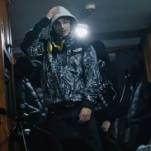Fire And Rain is best as a series of colorful factoids. One of the four albums chosen is Let It Be, which is unfortunate: It’s hard to think of a more meticulously documented band than The Beatles, and Browne has very little new to bring to their story. Similarly, while Browne does a decent job of keeping tabs on the comings, goings, and drug arrests of Crosby, Stills, Nash, and Young, he has nothing fresh to say about their music, as he recounts in stale language how “Almost Cut My Hair” conveyed “the sound of someone who meant every word he sang,” backed by “electric-guitar mincemeat.” He’s better at noting small things, like Paul Simon forcing Art Garfunkel to sing “Bridge Over Troubled Water” 72 times before using the second take.
Sometimes, in an effort to prop up his thesis, Browne stretches too far. At one point he compares Simon & Garfunkel (who had a 1957 hit as Tom & Jerry) to NASA: “The space program had emerged at the same time as Simon and Garfunkel, in the late ’50s; like them, it had been pushed into orbit. In some strange way the two entities were connected.” Nor is it news when Browne discovers that famous musicians frequently hang out with other famous musicians. (“In the intervening decades, their paths continued to cross and collide in myriad combinations…”) Much of his big-picture history—harried recaps of the Nixon White House, Vietnam, Kent State, and so forth—is strictly rewrites of commonly understood, unchallenged narratives about an America weary of Vietnam and scared of Nixon.
Sometimes, Browne delivers more: He delivers an enlightnening mini-history of the many music festivals that exploded in chaos in 1970; the concept of music festivals is now ubiquitous, but it was almost strangled at birth, thanks to associations with noisy hippies and heavy anti-fest legislation by state governments. Browne also sketches out the youthful James Taylor, arguing that his ascent while the members of The Beatles, Simon & Garfunkel, and CSNY all went solo “embodied the new self-reliance and self-absorption” that characterized the ’70s. For better or worse, Taylor—with his soft music, oft-referenced battles with heroin, and lone-wolf attitude—understood better than seemingly more influential musicians what music many wanted to hear in the 1970s. That’s a relatively novel argument; Browne’s book could use more of them.









































